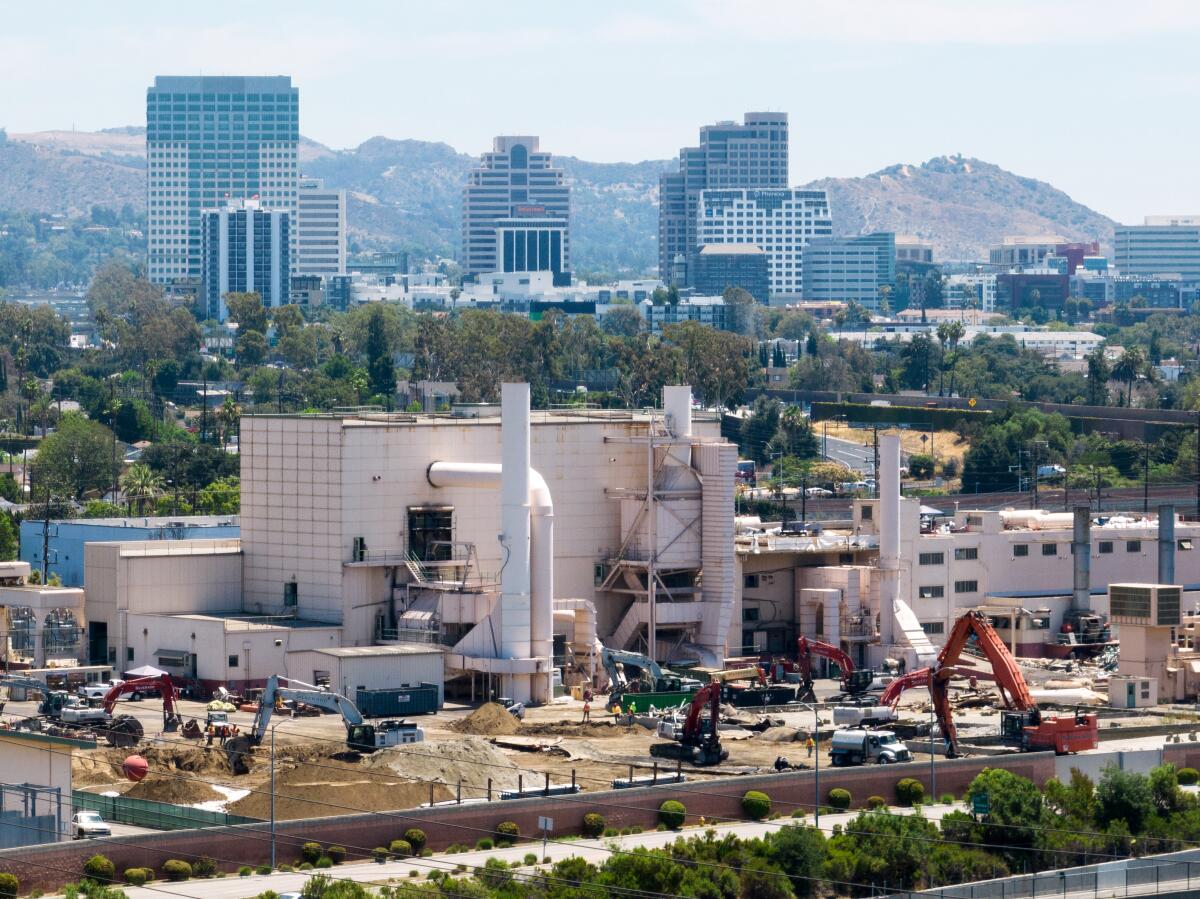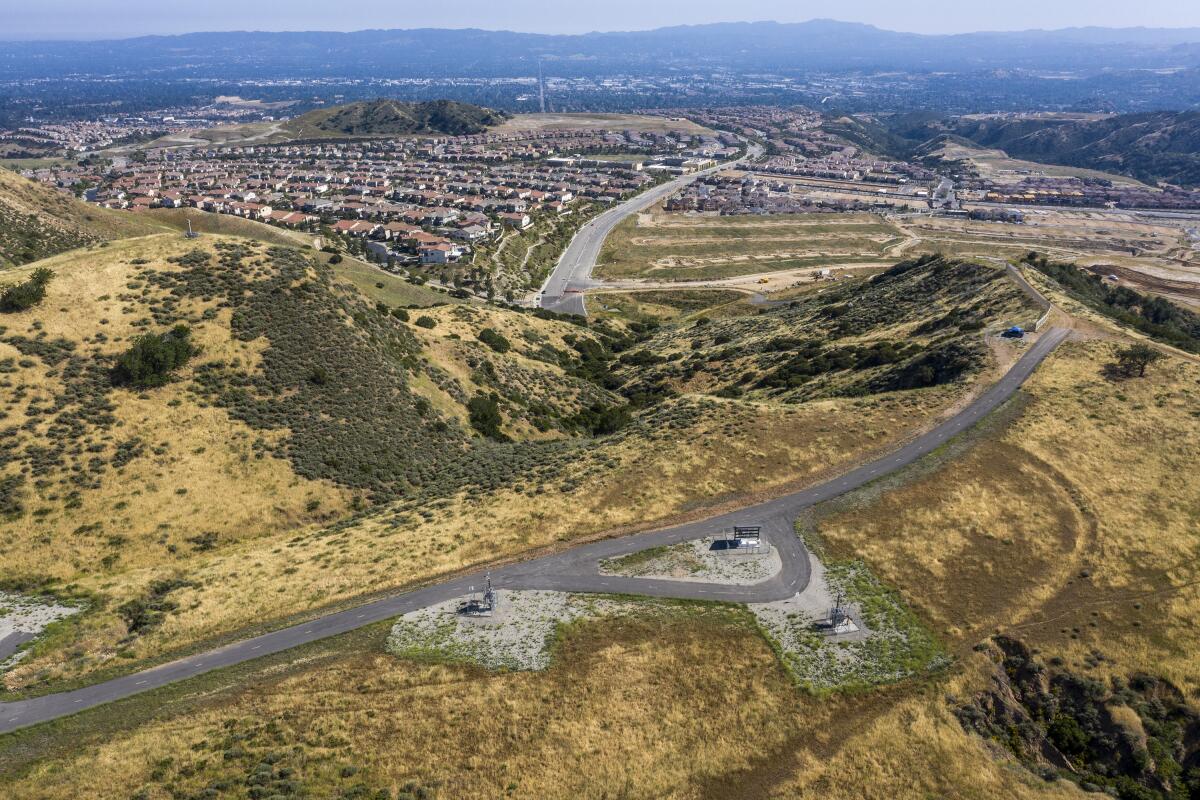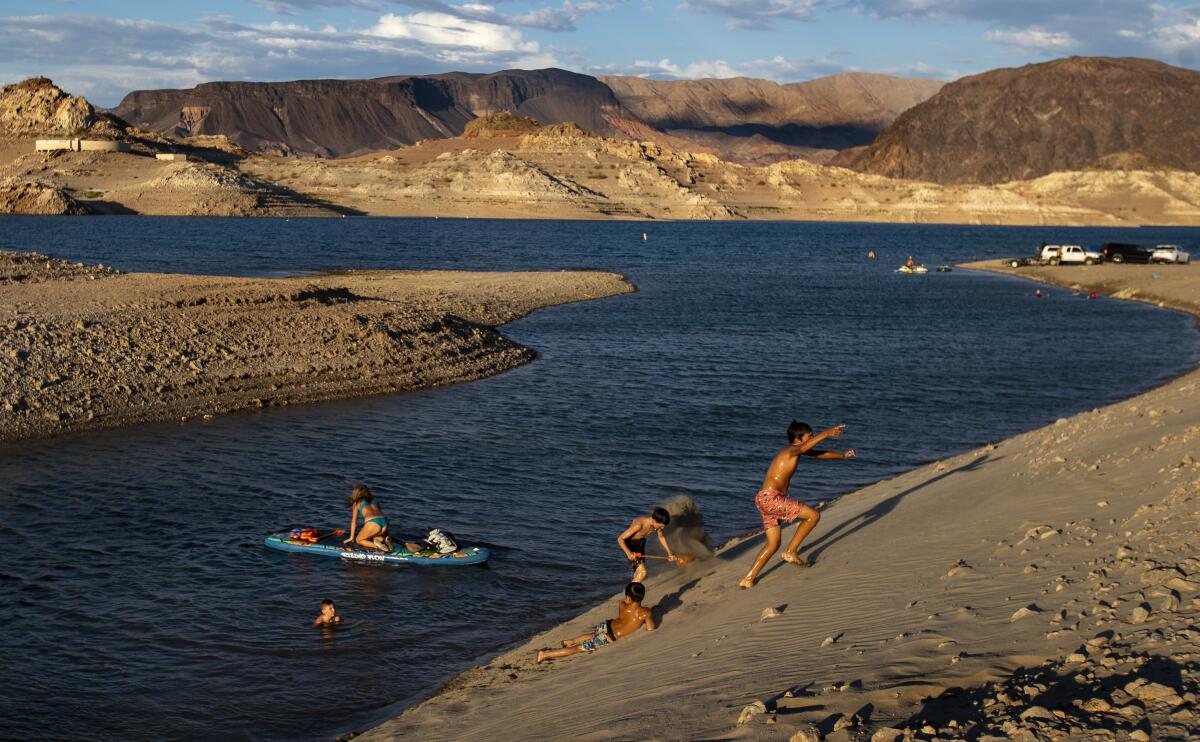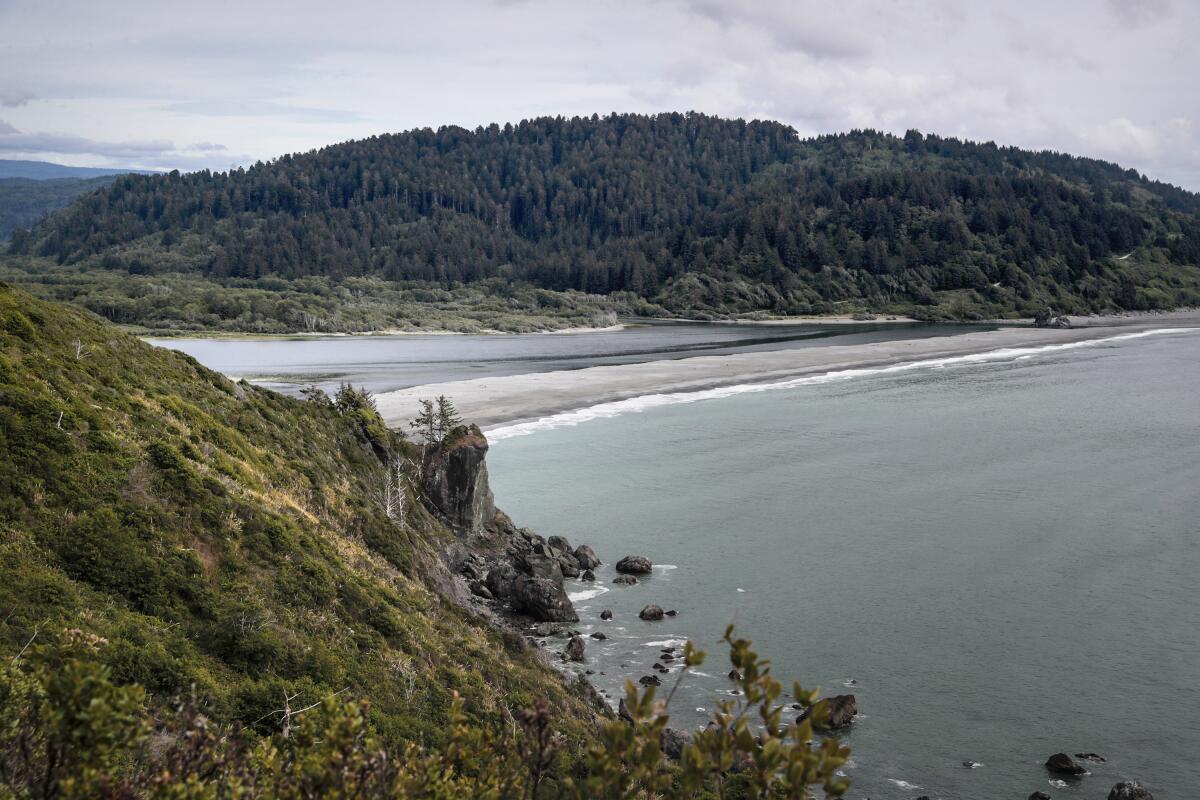Boiling Point: For better and for worse

- Share via
This story was originally published in Boiling Point, a newsletter about climate change and the environment. Sign up here to get it in your inbox.
The United States has burned record amounts of natural gas over the last month.
With scorching heat prompting Americans to crank up their air conditioners, power companies have responded by cranking up their gas plants. That’s according to the Washington Post’s Timothy Puko, who cites data showing that the U.S. gas fleet set daily demand records multiple times in July. The fact that we’re relying on a planet-warming fuel to keep safe from high temperatures made worse by global warming is a cruel irony — and one that speaks to the difficulty of slowing the climate crisis.
An example of that difficulty is playing out this month in Los Angeles County.
California regulators are gearing up to allow Southern California Gas Co. — the nation’s largest gas utility — to store dramatically more fuel at Aliso Canyon. The company has been limited in its ability to use the underground storage field since 2015, when it sprung a record-breaking methane leak that lasted months. Environmental activists and many local residents want to see Aliso Canyon shut down, to protect the health of nearby neighborhoods and help force a societal shift away from gas.
But SoCalGas says its customers would benefit from more storage at Aliso — and state officials seem to agree.
In a proposed decision released last week, staff at the California Public Utilities Commission called for granting the company’s request to increase the storage cap at Aliso Canyon to 68.6 billion cubic feet, from 41.16 billion cubic feet — a two-thirds boost. Commission staff agreed with SoCalGas and its fellow Sempra Energy subsidiary, San Diego Gas & Electric, both of which made the case that more storage at Aliso would result in lower natural gas prices for homes and businesses this winter.
Raising the cap wouldn’t affect the commission’s longer-term project to study the facility’s possible shutdown, staff argued.
“This proceeding continues to consider near-term pathways to reduce and eliminate reliance on Aliso Canyon,” they wrote.
The nation as a whole faces a similar conundrum as it phases out fossil fuels. How do we avoid undesirable outcomes — more blackouts, rising energy costs — while staving off climate harms even deadlier than those we’re already experiencing?

The harms we’re already experiencing are pretty bad.
The recent heat is Exhibit A. My colleague Hayley Smith reported that high temperatures fueled by the climate crisis affected four out of every five people on the planet last month, with Phoenix experiencing the hottest month on record for any U.S. city after enduring 31 straight days over 110 degrees. The Arizona Republic’s Joan Meiners weighed in on the heat wave with a fabulous story exploring the relationship between rising temperatures and insufficient housing — a story with parallels in California, where as much as we need to build more homes, building the wrong kinds can get people killed.
Desert regions have been especially dangerous the last few weeks. The Times’ Summer Lin noted that Zion National Park staff in Utah left chocolate chip cookie dough on a car’s dashboard to see whether it would bake — which it did, in about three hours.
“Park staff placed a thermometer inside the car to measure how hot it was,” Lin wrote. “The device later melted.”
Smith, meanwhile, wrote a searing reflection on what it was like to interview a Death Valley hiker who died a few hours later.
“Steve’s death brought me face to face with the harsh reality of our worsening climate crisis. Because while he may be the first person I have interviewed to succumb to extreme heat, he almost certainly will not be the last,” she wrote.
Ending the cycle of ever-hotter heat waves will require moving away from fossil fuels — despite what many Republican politicians claim. The Washington Post’s Maxine Joselow wrote about a new study concluding that planting 1 trillion trees — an idea promoted by former President Trump and House Speaker Kevin McCarthy, among others — would limit global temperature increases by just 0.15 degrees Celsius by 2100, and would take a land area close to three times the size of India.
President Biden last week announced new steps to help protect Americans from extreme heat, including stricter enforcement of workplace safety rules. But Biden’s actions were limited in scope, The Times’ Courtney Subramanian writes. And in the meantime, industry groups including the American Farm Bureau Federation and the Construction Industry Safety Coalition are objecting to the Biden administration’s efforts to develop heat exposure standards for workers, the Guardian’s Michael Sainato reports.
L.A. Times columnist Robin Abcarian had harsh words for U.S. leaders who refuse to face the climate reality.
“Imagine allowing people to die, and denying scientific reality along the way, just to prove a political point,” she wrote.
Even without government action, there are things we can do to protect ourselves and our loved ones. My colleague Kate Sequeira shared important advice on safeguarding babies and toddlers from heat illness, as well as signs of heat illness to watch out for. Helen Li wrote about the value of passive cooling — apartments that circulate air and keep you cool without A/C.
On a positive note, the risk of power shortages is relatively low in California. Regional temperature spikes and raging fires could still conspire to throw the electric grid into disarray. But with a lot more batteries on the grid this summer — and an abundance of hydropower following a wet winter — we’re in better shape than the last few years, The Times’ Grace Toohey writes.
Natural gas will continue to form the backbone of the electric grid, though — which brings us back to Aliso Canyon.
It will be up to Gov. Gavin Newsom’s appointees on the Public Utilities Commission to decide whether to raise the storage cap at Aliso, which they did once before. They can vote on their staff’s recommendation no earlier than Aug. 31.
I’ll keep you updated.
For now, here’s what else is happening around the West:
TOP STORIES

The Colorado River’s flow has declined roughly 10% this century due to global warming, according to a major new study. The Times’ Ian James wrote about the research — and raised the idea of reducing evaporation from canals by covering them with solar panels, an increasingly popular concept that I explored in detail a few years ago. As bad as things are on the Colorado, we still have the wet winter earlier this year to be thankful for. Check out these gorgeous photos by my colleague Luis Sinco of snow still clinging to the Sierra Nevada mountains, as well as these before-and-after satellite images compiled by Terry Castleman. (It’s so snowy that backcountry hikers need to be careful, Abhinanda Bhattacharyya writes.) The L.A. Department of Water and Power, meanwhile, is giving Angelenos permission to go back to watering their lawns three days a week, up from a previous limit of two days, The Times’ Hayley Smith reports. We probably shouldn’t get used to it.
California’s ocean waves are getting bigger and more powerful with climate change, worsening the threats of coastal erosion and flooding. That’s according to an important new study, as reported by my colleague Corinne Purtill. On the other side of the country, underwater coral reefs play a key role in buffering the Florida coast from hurricanes and flooding — but many of those reefs are being cooked to death by soaring water temperatures that have reached tripled digits in recent weeks. L.A. Times reporter Jenny Jarvie and photographer Carolyn Cole went scuba diving with scientists working desperately to save those reefs, in a powerful case study of the difficult choices that lie ahead for humanity. Back in Southern California, climate change seems to be bringing more juvenile sharks to coastal waters — but this one, at least, we shouldn’t worry about, Gina Errico writes.
California’s largest wildfire of the year is scorching the state’s Joshua tree forest, burning more than 80,000 acres in the Mojave Desert and spreading into Nevada as hundreds of firefighters battle the flames. The blaze began in the New York Mountains of Mojave National Preserve and has reached the newly established Avi Kwa Ame National Monument, my colleague Grace Toohey reports. This comes three years after the significantly smaller Dome fire burned more than 1 million Joshua trees, so it’s scary to think about just how bad the damage might be this time. Elsewhere in Southern California, a lawsuit from outdoor retailer Patagonia and others to block a fire-prevention project in Los Padres National Forest — which critics see as unnecessary environmental destruction — was rejected by a judge, The Times’ Christian Martinez reports. There may yet be an appeal.
THE ENERGY TRANSITION
The Federal Energy Regulatory Commission is making it easier for solar and wind farms to connect to the electric grid — but the agency’s latest rules still leaves a lot to be desired, renewable power companies say. Canary Media’s Jeff St. John wrote about the new rules, which were approved one day before the Biden administration released a proposal to speed up environmental reviews for clean energy projects. Details here from Robin Bravender at E&E News. For those of you wondering why I’m talking about large-scale infrastructure and not energy efficiency, fear not: St. John also wrote about California’s efforts to overhaul how it rewards homes and businesses for using less power. The state is moving away from rebates based on estimated savings and toward payments for actual performance — especially during hours when the electric grid is most stressed.
Seven major car companies are launching a joint venture to build 30,000 electric vehicle fast chargers in cities and along highways — a doubling of the current national network. The first chargers are expected to be open by next summer, the Washington Post’s Julian Mark writes. In other electric vehicle news, I had no idea some auto companies are building EVs without AM radio, citing electromagnetic interference from the motors that can cause static. My colleague Stephen Battaglio wrote about the bipartisan political push to require AM radio, which has united progressive Sen. Edward Markey (D-Mass.) and Fox News star Sean Hannity. They see AM radio as a vital outlet for free speech and a reliable source of information during emergencies.
The nation’s first large-scale solar-panel recycling plant is now open in Yuma, Ariz. The Associated Press’ Isabella O’Malley has a great inside look at how the plant works, and the economic challenges that remain for solar recycling. In other industrial news, America has seen a boom in electric car and battery manufacturing since President Biden signed the Inflation Reduction Act last August. Nearly 80 major clean energy manufacturing facilities have been announced — as many as the previous seven years combined, O’Malley and Michael Phillis report for the AP. New fees in Biden’s climate law may also have brought an end to speculative oil and gas leasing in Nevada. Bloomberg Law’s Bobby Magill wrote about declining industry interest in the state’s seemingly meager fossil fuel reserves, just ahead of a lease sale on federal lands that yielded zero bids.
POLITICAL CLIMATE
Just last year, the California Air Resources Board set a goal of slashing the state’s climate pollution 48% below 1990 levels by 2030. Now the powerful agency says doing so might not be possible. Details here from the Sacramento Bee’s Ari Plachta, who writes that officials are blaming a lack of technologies to remove carbon from the atmosphere — a line of reasoning that climate advocates see as all the more reason for California to aggressively cut down on fossil fuel combustion. A few states east, in New Mexico, many environmentalists were bewildered to see Democratic Gov. Michelle Lujan Grisham selected as co-chair of the U.S. Climate Alliance, a coalition of states working to limit global warming. Back home, activists say, the governor has largely failed to live up to her ambitious climate promises, Jeremiah O. Rhodes writes for Searchlight New Mexico.
A bipartisan coalition of state attorneys general, led by California’s Rob Bonta, is urging a federal court to reject a $10.3-billion settlement with chemicals manufacturer 3M over the presence of dangerous “forever chemicals” in U.S. drinking water systems. “The proposed settlement in its current form does not adequately account for the pernicious damage that 3M has done in so many of our communities,” Bonta said, as reported by the Associated Press’ John Flesher. Los Angeles County’s Board of Supervisors, meanwhile, is trying to figure out how contaminated our drinking water is, Steve Scauzillo reports for the L.A. Daily News. The group Los Angeles Waterkeeper says it’s found PFAS, a common forever chemical, in the L.A. River.
Elected officials in Fontana, a city in California’s Inland Empire, voted 3-2 to reject a warehouse complex proposed right next to a high school. But there are still thousands of warehouses in the region, drawing heavy truck traffic that fouls the air and warms the planet, The Times’ Tony Briscoe reports. “I wanted to ask all of the council members voting, would you knowingly send your kids to a school every single day knowing that there’s constantly this risk that they’re going to develop health issues?” asked Oscar Gonzalez, 23, before the vote. “And if you don’t have the heart to do that, then why would you wish that upon us?”
AROUND THE WEST

For the third time since 2016, Northern California’s Yurok Tribe won’t serve salmon at its annual salmon festival. The tribe says there’s been too much environmental damage along the Klamath River — from dam construction, water diversions, disease outbreaks, logging and mining operations and more — and there aren’t enough salmon left, my colleague Brittny Mejia reports. In a different water-quality story, The Times’ Jessica Garrison writes that the discovery of E. coli contamination in a Sierra Nevada mountain town’s drinking water is “yet another example of the vulnerability of rural California’s water systems.”
It’s been nearly a decade since President Obama designated San Gabriel Mountains National Monument in Southern California. But the designation came with no new federal money, which has become a problem as growing numbers of tourists trash the East Fork of the San Gabriel River, my colleague Louis Sahagún reports. “It’s a problem that has not only blighted the landscape, but also raised worries over contamination of one of the region’s largest watersheds,” Sahagún writes.
In a stunning reversal, Pacific Gas & Electric is eliminating its much ballyhooed “enhanced” tree-trimming program after spending $2.5 billion cutting or clearing trees along power lines to limit the risk of fire ignitions. PG&E says the technique turned out not to be effective, so it’s pivoting to a different wildfire-prevention strategy that involves quickly shutting off electric lines when branches fall on them, the Wall Street Journal’s Katherine Blunt reports. In other wildfire turmoil, High Country News’ Kylie Mohr told the harrowing story of two mountain hikers trapped in a burning forest, and their desperate efforts to survive.
ONE MORE THING

I wrote in Tuesday’s newsletter about a new report from the National Audubon Society calling for the U.S. to confront the climate crisis by building potentially hundreds of thousands of miles of new power lines — even though those lines would kill some birds. The group said the electric-grid expansion would help prevent the extinction of many bird species from global warming, and that the avian harm from new power lines could be limited through careful routing and design techniques.
So I was intrigued to see this story from Mia Maldonado at the Idaho Capital Sun, about new research finding that birds dying along Western power lines are killed by gunshots far more often than by power-line collisions or electrocution. It’s a finding that tracks with the Audubon Society’s argument that power lines kill relatively few birds compared with other human activities.
I also heard from some readers who pointed out that I didn’t mention one of the biggest threats to birds: house cats.
The Audubon Society notes on its website that domestic cats kill several billion birds in the U.S. each year — many times more than renewable energy infrastructure. That doesn’t mean we should ignore the potential harm to birds from power lines, wind turbines and solar farms, or stop working to limit that harm. But it does mean we should try to keep our cats indoors.
We’ll be back in your inbox Tuesday. To view this newsletter in your Web browser, click here. And for more climate and environment news, follow @Sammy_Roth on Twitter.
Toward a more sustainable California
Get Boiling Point, our newsletter exploring climate change, energy and the environment, and become part of the conversation — and the solution.
You may occasionally receive promotional content from the Los Angeles Times.






